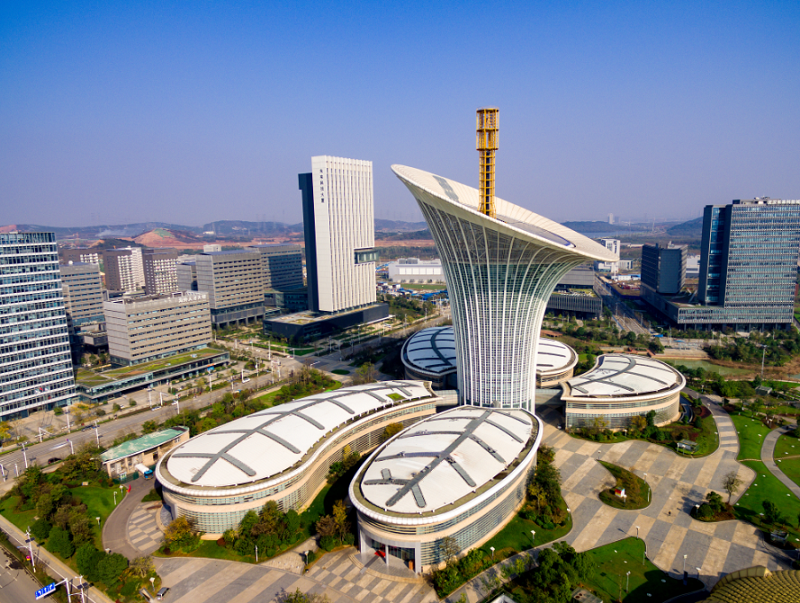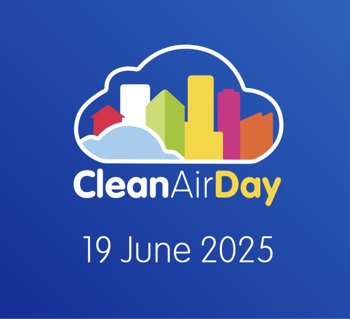Institute of New Energy, Wuhan
In November 2017, the iconic lily-shaped Institute of New Energy’s building in Wuhan, China (INEW) received its BREEAM Very Good post-construction certificate at a celebratory ceremony.
Present at the event was Baroness Fairhead, Minister of State for the Department for International Trade who is leading a business delegation in China aiming to boost bilateral trade and investment ties.
The Minister said; "I am delighted to witness the awarding of this BREEAM certificate for the Wuhan New Energy Institute’s office building. The UK has a strong foundation in sustainability and environmental protection, with considerable expertise in this area, and can support China to achieve its goals for sustainable urbanisation and innovation."
Integrating a 388 kw solar power system, a 12 kw wind power system and a rainwater recycling system that can save 12,600 tons of water annually, the 140 m-tall tower and surrounding leaf shaped laboratories achieved a BREEAM score of 55% and achieved China’s Green Building Label 3 Star level.
Despite the extreme temperatures experienced in this sub-tropical region of China, the building has a natural ventilation strategy with a central shaft that carries hot air up and out through vents at the top.
An overhanging roof provides solar shading for its glazed façade, and light wells carry daylight to the underground car park. Recreational space is provided for occupants in the form of a 17th floor roof garden.
Chief Engineer, Mr Yansong Liu, who received the BREEAM certificate on behalf of the Institute said; "This is the largest bionic building in China – it is an exemplar demonstration of innovation and sustainability."
Director of BRE China, Jaya Skandamoorthy said; "We are very pleased to present this international BREEAM certificate to INEW for its Wuhan Flower building, it is a very tangible demonstration of China’s international commitment to drive down its carbon emissions. It's also very fitting that it is the home of INEW who have a clear remit to drive the take up of innovative, clean and renewable energy technologies across the country."
BRE China Business Development Manager Mr Wei Liu concluded; "We are very pleased to see more projects that not only meet China’s Green Building Standard, but also benchmark with leading international standards like BREEAM. BRE China will continue to drive positive change in the built environment and sustainable development across the country."
This article was originally published here by BRE Buzz on 14th Nov 2017. It was written by Simon Guy.
--BRE Buzz
[edit] Find out more
[edit] Related articles on Designing Buildings Wiki
Featured articles and news
Ebenezer Howard: inventor of the garden city. Book review.
The Grenfell Tower fire, eight years on
A time to pause and reflect as Dubai tower block fire reported just before anniversary.
Airtightness Topic Guide BSRIA TG 27/2025
Explaining the basics of airtightness, what it is, why it's important, when it's required and how it's carried out.
Construction contract awards hit lowest point of 2025
Plummeting for second consecutive month, intensifying concerns for housing and infrastructure goals.
Understanding Mental Health in the Built Environment 2025
Examining the state of mental health in construction, shedding light on levels of stress, anxiety and depression.
The benefits of engaging with insulation manufacturers
When considering ground floor constructions.
Lighting Industry endorses Blueprint for Electrification
The Lighting Industry Association fully supports the ECA Blueprint as a timely, urgent call to action.
BSRIA Sentinel Clerk of Works Training Case Study
Strengthening expertise to enhance service delivery with integrated cutting-edge industry knowledge.
Impact report from the Supply Chain Sustainability School
Free sustainability skills, training and support delivered to thousands of UK companies to help cut carbon.
The Building Safety Forum at the Installershow 2025
With speakers confirmed for 24 June as part of Building Safety Week.
The UK’s largest air pollution campaign.
Future Homes Standard, now includes solar, but what else?
Will the new standard, due to in the Autumn, go far enough in terms of performance ?
BSRIA Briefing: Cleaner Air, Better tomorrow
A look back at issues relating to inside and outside air quality, discussed during the BSRIA briefing in 2023.
Restoring Abbotsford's hothouse
Bringing the writer Walter Scott's garden to life.
Reflections on the spending review with CIAT.
Retired firefighter cycles world to raise Grenfell funds
Leaving on 14 June 2025 Stephen will raise money for youth and schools through the Grenfell Foundation.
Key points for construction at a glance with industry reactions.
























